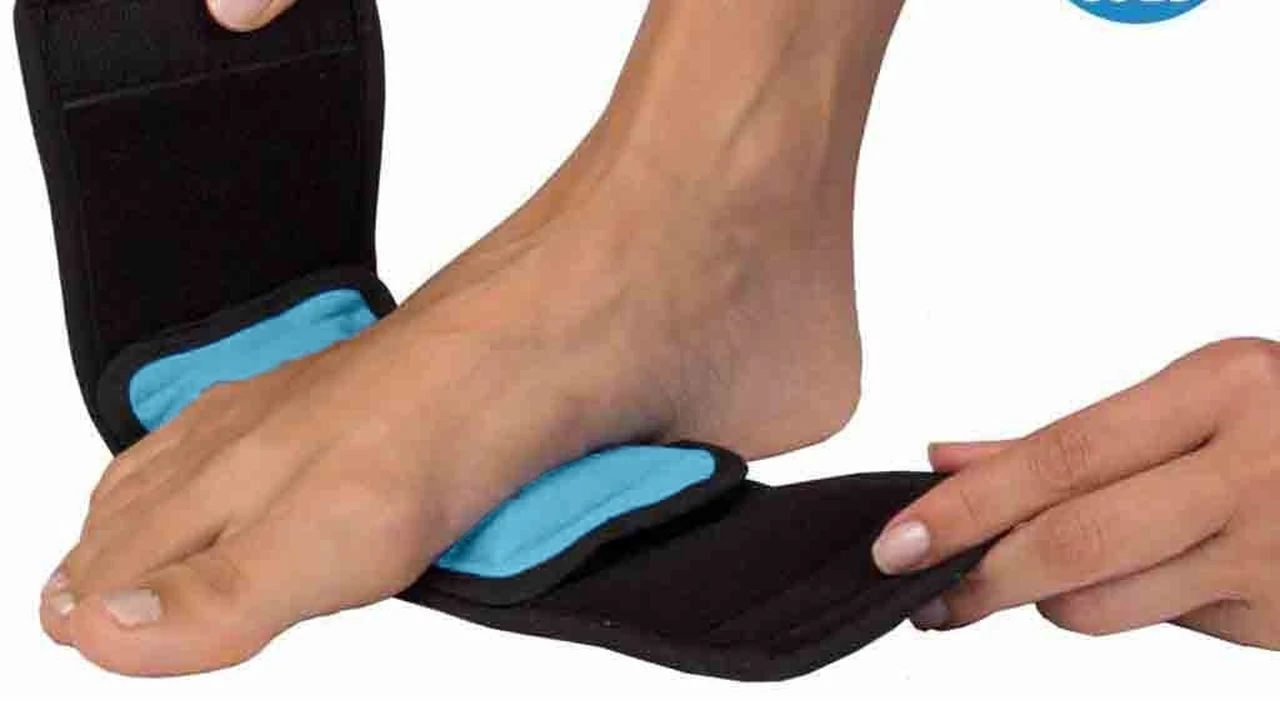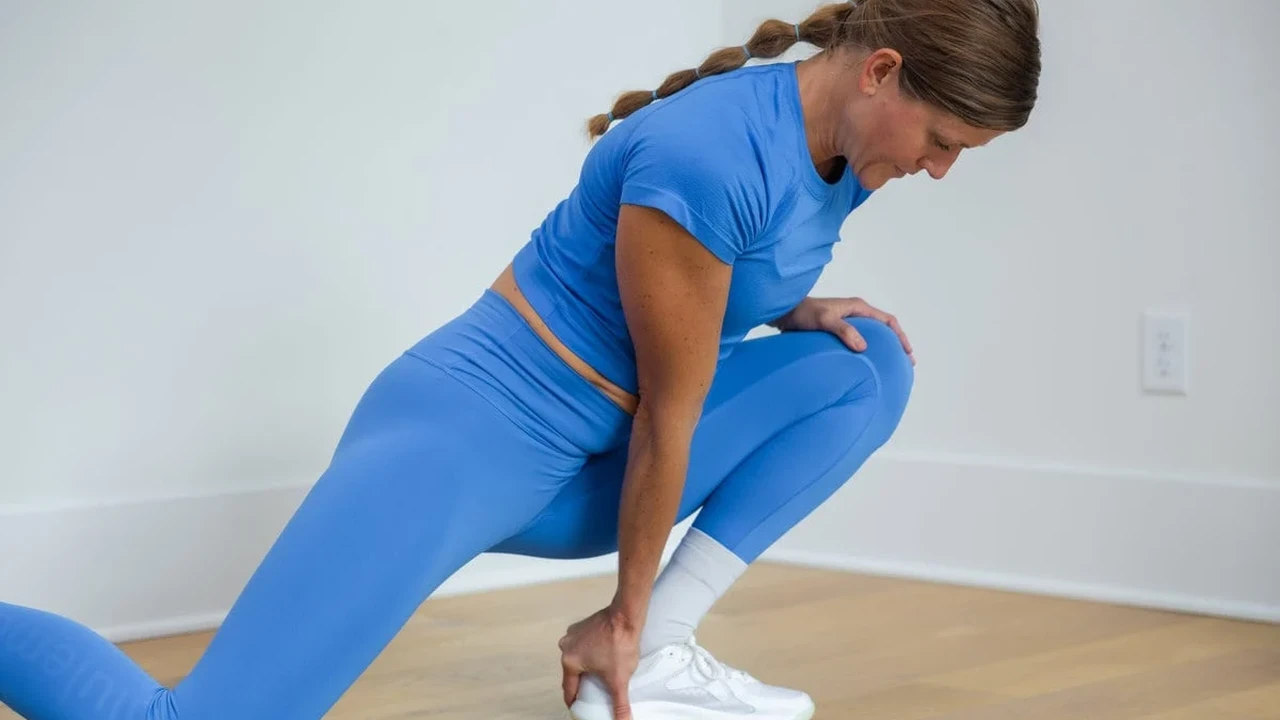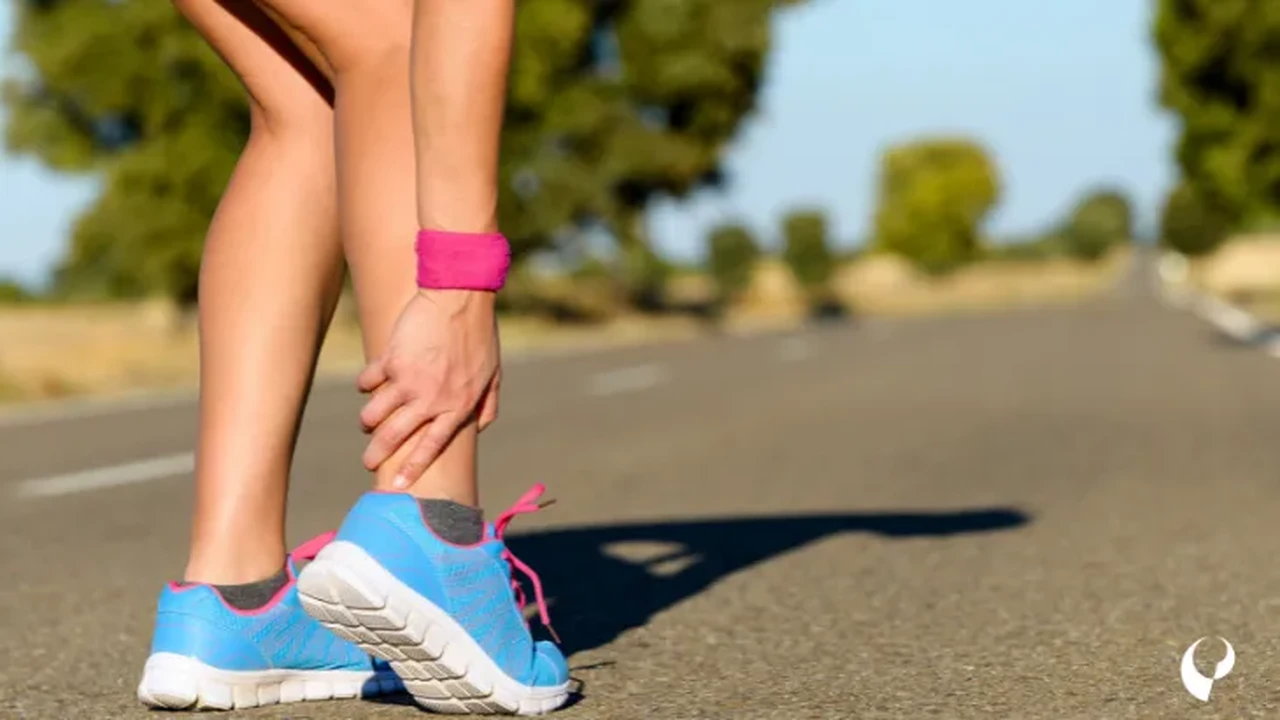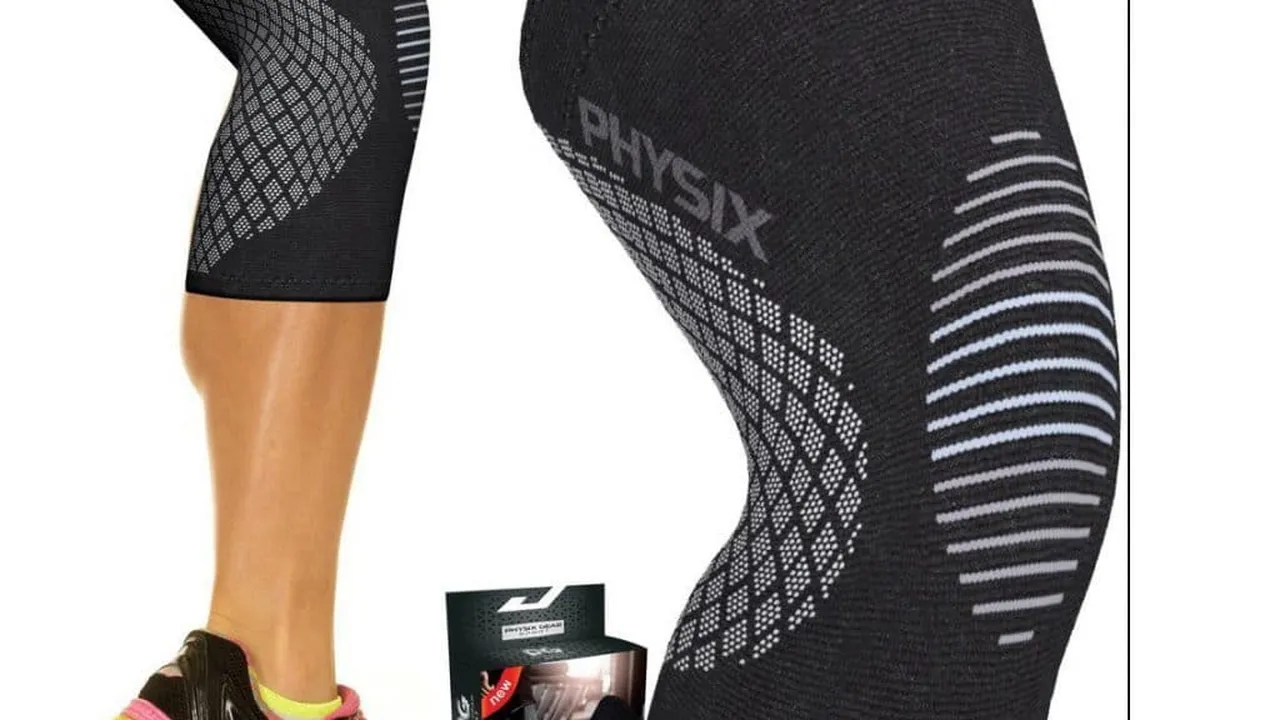7 Best Ankle Supports for Running: Reviews & Comparison
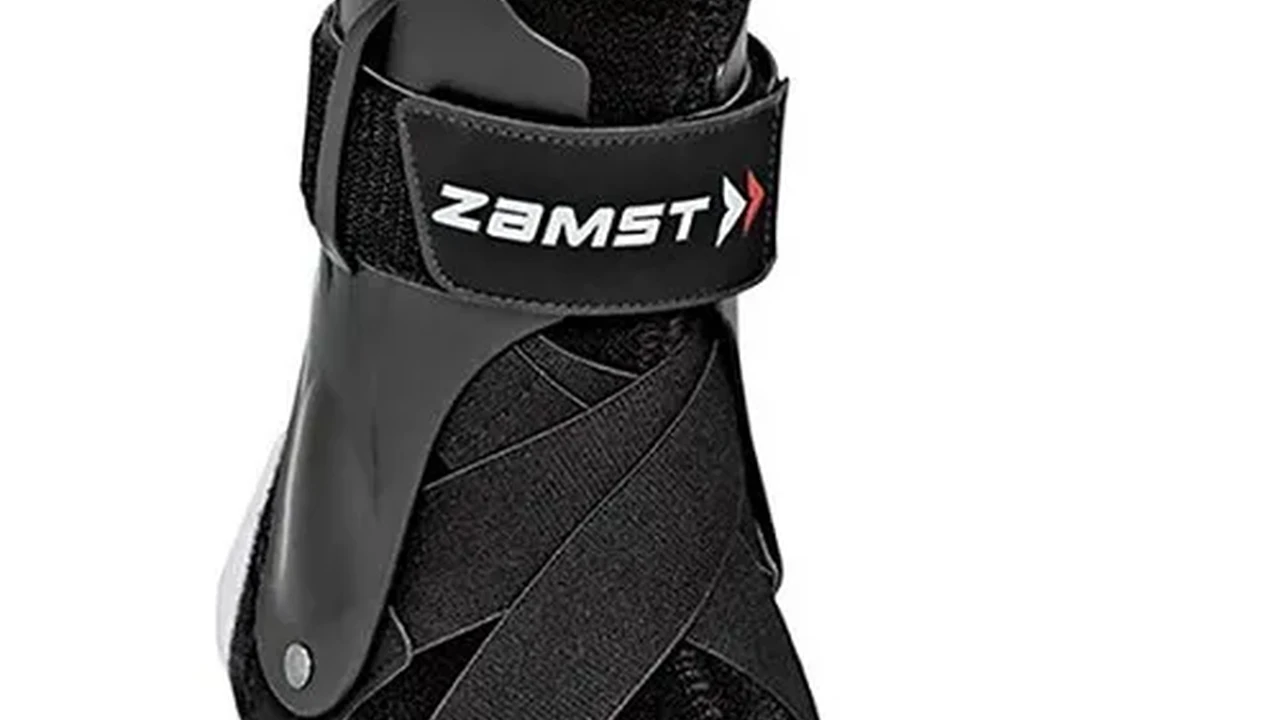
Understanding Ankle Injuries in Runners A Comprehensive Guide
Running, while a fantastic form of exercise, can unfortunately put significant stress on your ankles and feet. Understanding the common ankle injuries that runners face is the first step in prevention and proper treatment. Let's delve into some of the most prevalent issues:
- Ankle Sprains: These are arguably the most common ankle injuries among runners. They occur when the ligaments that support the ankle are stretched or torn, usually due to a sudden twisting or rolling motion. Different grades of sprains exist, ranging from mild (Grade 1) to severe (Grade 3), each requiring varying levels of care.
- Achilles Tendinitis: The Achilles tendon, connecting your calf muscle to your heel bone, is crucial for running. Overuse or sudden increases in training intensity can lead to Achilles tendinitis, causing pain and stiffness along the back of your heel and lower calf.
- Plantar Fasciitis: This condition affects the plantar fascia, a thick band of tissue running along the bottom of your foot from your heel to your toes. Inflammation of the plantar fascia can cause sharp heel pain, especially in the morning or after periods of rest.
- Stress Fractures: These tiny cracks in the bone, often occurring in the foot or ankle, are usually caused by repetitive stress and overuse. Runners are particularly susceptible to stress fractures due to the constant pounding on hard surfaces.
- Peroneal Tendonitis: The peroneal tendons run along the outside of your ankle and help stabilize the foot. Overuse or improper foot mechanics can lead to inflammation of these tendons, causing pain and swelling on the outer ankle.
- Anterior Tibialis Tendonitis: Located on the front of your shin, the anterior tibialis tendon helps lift your foot during running. Overuse can lead to inflammation, causing pain along the front of your ankle and shin.
Recognizing the signs and symptoms of these injuries is crucial for timely intervention. Ignoring early warning signs can lead to more severe and chronic problems. If you experience persistent ankle pain, swelling, stiffness, or instability, it's essential to consult with a healthcare professional for proper diagnosis and treatment.
Why Ankle Support is Crucial for Runners Protecting Your Ankles
Given the prevalence of ankle injuries in runners, providing adequate support is paramount. Ankle supports can play a vital role in preventing injuries, managing existing conditions, and enhancing performance. Here's why they're so important:
- Injury Prevention: Ankle supports can help stabilize the ankle joint, reducing the risk of sprains and other injuries. They provide external support that limits excessive motion and protects the ligaments from overstretching.
- Managing Existing Injuries: If you're recovering from an ankle injury, an ankle support can provide compression and stability, promoting healing and reducing pain. They can also help prevent re-injury during the rehabilitation process.
- Enhanced Stability: Runners with weak ankles or a history of ankle injuries can benefit from the added stability provided by ankle supports. They can help improve balance and coordination, reducing the risk of falls and missteps.
- Improved Proprioception: Ankle supports can enhance proprioception, your body's awareness of its position in space. This improved awareness can help you react more quickly to uneven terrain and avoid potential injuries.
- Increased Confidence: Knowing that your ankles are well-supported can boost your confidence and allow you to run with greater freedom and less fear of injury.
However, it's important to choose the right type of ankle support for your specific needs. Different types of supports offer varying levels of protection and stability, and it's crucial to select one that is appropriate for your activity level and any existing conditions.
Types of Ankle Supports for Running Choosing the Right Support
The market offers a wide array of ankle supports, each designed for specific purposes and levels of support. Understanding the different types can help you make an informed decision:
- Ankle Sleeves (Compression Sleeves): These sleeves provide mild compression and support to the ankle joint. They are ideal for runners seeking light support and improved circulation. They are often used for minor pain relief and to prevent swelling.
- Lace-Up Ankle Braces: Lace-up braces offer a higher level of support compared to sleeves. They typically feature laces that allow you to customize the fit and level of compression. They are suitable for runners with mild to moderate ankle instability or those recovering from minor sprains.
- Hinged Ankle Braces: Hinged braces provide the most significant level of support and stability. They feature hinges that allow for natural ankle movement while preventing excessive inversion and eversion. These braces are often recommended for runners recovering from severe ankle sprains or those with chronic ankle instability.
- Ankle Straps and Wraps: These supports offer a customizable level of compression and support. They are typically made of elastic or neoprene and can be wrapped around the ankle to provide targeted support. They are often used for managing pain and swelling.
When choosing an ankle support, consider the following factors:
- Level of Support: Determine the level of support you need based on your activity level, the severity of your injury, and your personal preferences.
- Fit and Comfort: Ensure that the support fits snugly but comfortably. It should not restrict your range of motion or cause any discomfort.
- Material: Choose a breathable and moisture-wicking material to prevent overheating and sweat buildup.
- Durability: Select a support that is made of durable materials and can withstand the rigors of running.
- Ease of Use: Opt for a support that is easy to put on and take off, especially if you need to wear it frequently.
Review Criteria for Ankle Supports Evaluating Performance and Features
To provide you with the best recommendations, we've established a comprehensive review process that considers several key factors:
- Support and Stability: How well does the support stabilize the ankle joint and prevent excessive motion? We assess the brace's ability to limit inversion, eversion, and plantar flexion.
- Comfort and Fit: Is the support comfortable to wear for extended periods of time? Does it fit snugly without restricting movement or causing irritation? We consider the materials used, the design of the brace, and the availability of different sizes.
- Durability and Construction: How well is the support made? Can it withstand the demands of running on various terrains? We evaluate the quality of the materials, the stitching, and the overall construction of the brace.
- Breathability and Moisture-Wicking: Does the support allow for adequate airflow to prevent overheating and sweat buildup? We assess the breathability of the materials and the presence of moisture-wicking properties.
- Ease of Use and Adjustment: How easy is the support to put on, take off, and adjust? We consider the closure system, the adjustability of the straps, and the overall user-friendliness of the brace.
- Price and Value: Is the support worth the cost? We compare the price of the support to its features, performance, and durability to determine its overall value.
The 7 Best Ankle Supports for Running Our Top Picks
Based on our extensive research and testing, here are our top picks for the best ankle supports for running:
1 Zamst A2-DX Ankle Brace The Ultimate in Stability
Overview: The Zamst A2-DX is widely regarded as one of the most supportive ankle braces on the market. It features a unique Exo-Grid (Xternal) technology that provides exceptional lateral and medial stability. This brace is ideal for runners with chronic ankle instability or those recovering from severe ankle sprains.
Key Features:
- Exo-Grid (Xternal) technology for superior lateral and medial stability.
- A-Fit technology for anatomical fit and comfort.
- i-Fit technology for adjustable support and compression.
- Grip-Tech for anti-migration.
Pros:
- Exceptional support and stability.
- Comfortable and anatomical fit.
- Adjustable compression.
- Durable construction.
Cons:
- Higher price point.
- May feel bulky for some runners.
Use Cases:
- Runners with chronic ankle instability.
- Runners recovering from severe ankle sprains.
- Runners seeking maximum ankle support.
Pricing: Approximately $80 - $100.
2 McDavid 195 Ankle Brace Level 3 Advanced Protection
Overview: The McDavid 195 Ankle Brace is a popular choice for runners seeking a balance of support and flexibility. It features a lace-up design with figure-6 strapping for enhanced stability. This brace is suitable for runners with mild to moderate ankle instability or those looking for preventative support.
Key Features:
- Lace-up design with figure-6 strapping.
- Padded lining for comfort.
- Durable nylon construction.
- Fits either the left or right ankle.
Pros:
- Good balance of support and flexibility.
- Comfortable to wear.
- Durable construction.
- Affordable price.
Cons:
- May not provide enough support for severe ankle instability.
- Lacing can be time-consuming.
Use Cases:
- Runners with mild to moderate ankle instability.
- Runners seeking preventative ankle support.
- Runners looking for an affordable option.
Pricing: Approximately $30 - $40.
3 ASICS Gel Ankle Support Sleeve Compression and Comfort
Overview: The ASICS Gel Ankle Support Sleeve is designed for runners seeking light compression and support. It features a gel pad that provides cushioning and shock absorption. This sleeve is ideal for runners with minor ankle pain or those looking for added comfort during runs.
Key Features:
- Gel pad for cushioning and shock absorption.
- Compression sleeve for support and improved circulation.
- Breathable and moisture-wicking fabric.
- Easy to put on and take off.
Pros:
- Provides light compression and support.
- Comfortable to wear.
- Breathable and moisture-wicking.
- Easy to use.
Cons:
- Provides minimal support for ankle instability.
- May not be suitable for runners with severe ankle pain.
Use Cases:
- Runners with minor ankle pain.
- Runners seeking added comfort during runs.
- Runners looking for light compression and support.
Pricing: Approximately $20 - $30.
4 BioSkin TriLok Ankle Stabilizer Innovative Design
Overview: The BioSkin TriLok Ankle Stabilizer is a unique support that focuses on addressing plantar fasciitis and other foot and ankle pain. Its design supports the plantar fascia and limits excessive pronation, making it a great choice for runners with these specific issues.
Key Features:
- TriLok system supports the plantar fascia.
- Limits excessive pronation.
- Thin and comfortable design.
- Can be worn with most shoes.
Pros:
- Effective for plantar fasciitis and related pain.
- Comfortable and low-profile.
- Durable construction.
Cons:
- May not provide as much direct ankle support as other braces.
- Specific to plantar fasciitis and pronation issues.
Use Cases:
- Runners with plantar fasciitis.
- Runners with excessive pronation.
- Runners seeking foot and ankle support for these specific issues.
Pricing: Approximately $40 - $50.
5 DonJoy Performance Webtech Ankle Brace Targeted Support
Overview: The DonJoy Performance Webtech Ankle Brace offers a unique web design that provides targeted support and compression. It's designed to improve circulation and reduce pain and swelling. This brace is a good option for runners with mild to moderate ankle issues.
Key Features:
- Web design for targeted support and compression.
- Breathable and lightweight materials.
- Easy to apply and adjust.
- Low-profile design.
Pros:
- Provides targeted support and compression.
- Comfortable and breathable.
- Easy to use.
Cons:
- May not provide enough support for severe ankle injuries.
- The web design may not appeal to all users.
Use Cases:
- Runners with mild to moderate ankle pain or swelling.
- Runners seeking improved circulation and support.
- Runners looking for a comfortable and easy-to-use brace.
Pricing: Approximately $50 - $60.
6 PowerLix Ankle Brace Sleeve Versatile Compression
Overview: The PowerLix Ankle Brace Sleeve is a simple and affordable compression sleeve that provides support and pain relief. It's made of a comfortable and breathable material and is suitable for a variety of activities, including running.
Key Features:
- Compression sleeve design.
- Breathable and comfortable material.
- Easy to put on and take off.
- Affordable price.
Pros:
- Provides compression and support.
- Comfortable to wear.
- Affordable.
Cons:
- Offers minimal support compared to more structured braces.
- May not be durable enough for intense use.
Use Cases:
- Runners seeking light compression and support.
- Runners looking for an affordable option.
- Runners with minor ankle pain or discomfort.
Pricing: Approximately $15 - $25.
7 Active Ankle T2 Ankle Brace Reliable Protection
Overview: The Active Ankle T2 Ankle Brace is known for its durability and reliable protection. It features a hinged design that allows for full range of motion while providing excellent lateral support. This brace is a good choice for runners who need a high level of protection and are prone to ankle sprains.
Key Features:
- Hinged design for full range of motion.
- Durable and lightweight construction.
- Provides excellent lateral support.
- Easy to adjust and wear.
Pros:
- Provides excellent lateral support and protection.
- Durable and reliable.
- Allows for full range of motion.
Cons:
- May feel bulky for some runners.
- Can be more expensive than other options.
Use Cases:
- Runners who are prone to ankle sprains.
- Runners who need a high level of protection.
- Runners who want a durable and reliable brace.
Pricing: Approximately $60 - $70.
Comparing Ankle Supports A Side-by-Side Analysis
To help you further narrow down your choices, here's a comparison table summarizing the key features and benefits of each ankle support:
| Ankle Support | Type | Support Level | Key Features | Pros | Cons | Price Range | Best For |
|---|---|---|---|---|---|---|---|
| Zamst A2-DX | Hinged Brace | High | Exo-Grid, A-Fit, i-Fit | Exceptional stability, Comfortable, Adjustable | Expensive, Bulky for some | $80 - $100 | Chronic instability, Severe sprains |
| McDavid 195 | Lace-Up Brace | Medium | Lace-up, Figure-6 strapping | Good balance, Comfortable, Affordable | Less support for severe issues, Lacing time | $30 - $40 | Mild instability, Preventative support |
| ASICS Gel Sleeve | Compression Sleeve | Low | Gel pad, Compression | Light support, Comfortable, Breathable | Minimal support, Not for severe pain | $20 - $30 | Minor pain, Added comfort |
| BioSkin TriLok | Stabilizer | Medium | TriLok system, Plantar fascia support | Effective for plantar fasciitis, Comfortable | Not as much direct ankle support | $40 - $50 | Plantar fasciitis, Pronation issues |
| DonJoy Webtech | Brace | Medium | Web design, Targeted support | Targeted support, Comfortable, Easy to use | Not for severe injuries, Web design may not appeal | $50 - $60 | Mild to moderate pain, Improved circulation |
| PowerLix Sleeve | Compression Sleeve | Low | Compression, Breathable material | Compression, Comfortable, Affordable | Minimal support, Not durable for intense use | $15 - $25 | Light compression, Affordable option |
| Active Ankle T2 | Hinged Brace | High | Hinged design, Lateral support | Excellent lateral support, Durable, Full range of motion | Bulky for some, More expensive | $60 - $70 | Ankle sprains, High level of protection |
Tips for Running with Ankle Supports Maximizing Benefits and Minimizing Risks
Wearing an ankle support can be beneficial, but it's essential to use it correctly to maximize its benefits and minimize any potential risks:
- Proper Fit: Ensure that the support fits snugly but comfortably. It should not restrict your range of motion or cause any discomfort. Follow the manufacturer's instructions for proper sizing and application.
- Gradual Introduction: If you're new to wearing ankle supports, start by wearing it for short periods of time and gradually increase the duration as you become more comfortable.
- Listen to Your Body: Pay attention to any pain or discomfort you experience while wearing the support. If you experience any issues, stop using it and consult with a healthcare professional.
- Proper Maintenance: Clean your ankle support regularly according to the manufacturer's instructions. This will help prevent the buildup of sweat and bacteria.
- Don't Rely Solely on the Support: Ankle supports are not a substitute for proper training, conditioning, and injury prevention techniques. Continue to focus on strengthening your ankle muscles, improving your balance, and using proper running form.
- Consult with a Professional: If you have any concerns about your ankle health or the use of ankle supports, consult with a healthcare professional or a certified athletic trainer. They can provide personalized recommendations based on your specific needs and conditions.
Beyond Ankle Supports Additional Strategies for Ankle Injury Prevention
While ankle supports can be a valuable tool, they are just one piece of the puzzle when it comes to preventing ankle injuries. Here are some additional strategies to incorporate into your training regimen:
- Strengthening Exercises: Strengthening the muscles around your ankle joint can improve stability and reduce the risk of injury. Examples include calf raises, toe raises, and ankle inversions and eversions using resistance bands.
- Balance and Proprioception Exercises: Improving your balance and proprioception can help you react more quickly to uneven terrain and avoid potential injuries. Examples include single-leg stands, wobble board exercises, and agility drills.
- Proper Warm-Up and Cool-Down: Always warm up before each run with dynamic stretches and cool down afterward with static stretches. This will help prepare your muscles for activity and improve flexibility.
- Proper Running Form: Pay attention to your running form and make sure you're landing properly on your feet. Avoid overstriding and try to maintain a midfoot strike.
- Appropriate Footwear: Wear shoes that provide adequate support and cushioning for your feet. Replace your shoes regularly as they wear down.
- Gradual Training Progression: Avoid sudden increases in training intensity or volume. Gradually increase your mileage and intensity over time to allow your body to adapt.
- Listen to Your Body: Pay attention to any pain or discomfort you experience during running. Rest and recover when needed.
The Future of Ankle Support Technology Innovations on the Horizon
The field of ankle support is constantly evolving, with new technologies and innovations emerging all the time. Here are some trends to watch out for:
- Smart Ankle Supports: These supports incorporate sensors and technology to track your ankle movements, provide real-time feedback, and personalize your support.
- 3D-Printed Ankle Braces: 3D printing allows for the creation of custom-fit ankle braces that provide optimal support and comfort.
- Advanced Materials: New materials are being developed that are lighter, stronger, and more breathable than traditional materials.
- Integration with Wearable Technology: Ankle supports are being integrated with wearable technology, such as smartwatches and fitness trackers, to provide a more comprehensive view of your ankle health and performance.
These advancements promise to further enhance the effectiveness and comfort of ankle supports, helping runners of all levels stay healthy and injury-free.
:max_bytes(150000):strip_icc()/277019-baked-pork-chops-with-cream-of-mushroom-soup-DDMFS-beauty-4x3-BG-7505-5762b731cf30447d9cbbbbbf387beafa.jpg)



